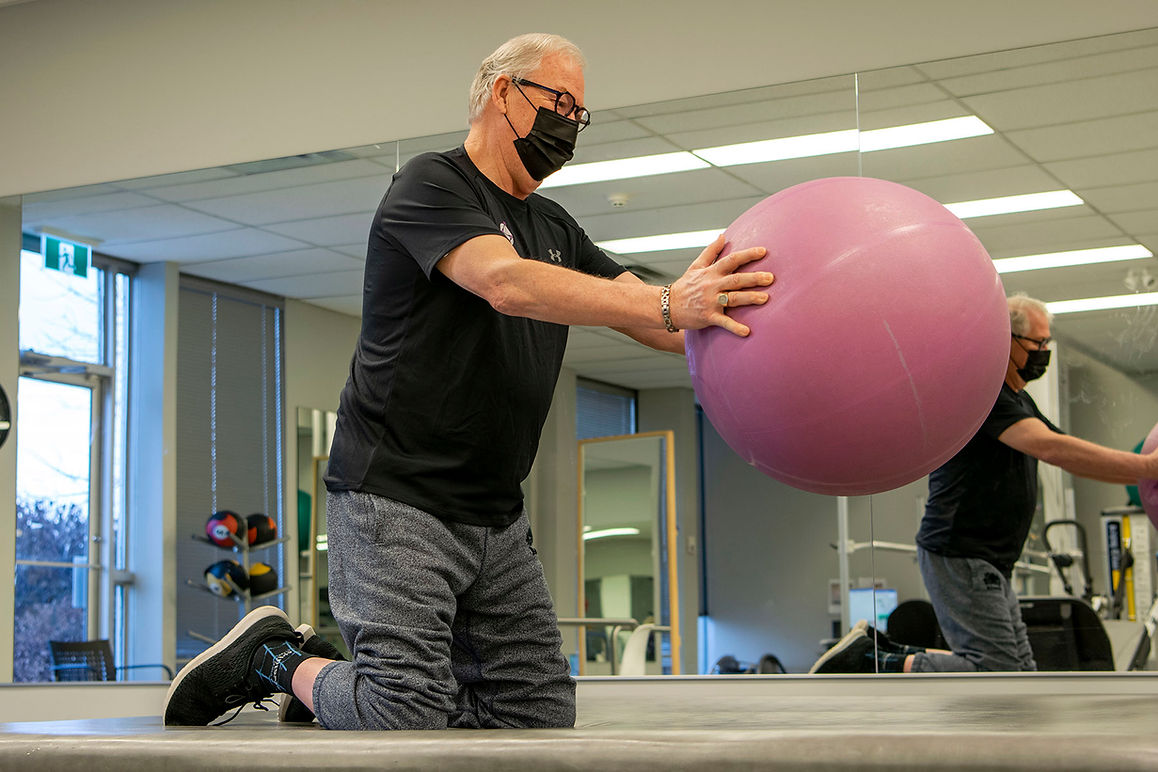Weight bearing presents multiple physical and medical benefits following an injury or diagnosis. Injuries such as Spinal Cord Injury (SCI), Stroke, and Cerebral Palsy are often associated with a decrease in mobility, which ultimately leads to reduced weight bearing - this can present an increased risk to these health concerns, or complications.
With the use of technology, mobility aids and equipment, Synaptic offers several ways to increase weight bearing in your life and combat risks!
What is Weight Bearing?
Weight bearing means loading the joints and long bones of our bodies, which include the bones in our arms and our legs. The most common examples of weight bearing are standing or walking. However, many other positions can be utilized and are applied here at Synaptic.
Standing can be completed in the Platform Walker, the Easy Stand, Four Wheeled Walker or Two Wheeled Walker. Partial standing or weight bearing is demonstrated with the Total Gym, E-Pacer and the Body Weight Supported Treadmill. Many of the devices we use to stand can additionally be used for walking.

Weight bearing positions that you may not have thought of include four-point and two-point. Hands and knees positioning is a four-point position, which not only loads through our legs, but our arms as well. Two-point or high kneeling is great for loading through our legs. Often, both positions are used for exercise-based therapy to increase your total weight bearing time.
What are the Benefits?
Weight bearing can maintain skin integrity!
It does so by allowing blood to reach tissues that are subjected to pressure in a sitting position. Therefore, weight-bearing not only promotes skin health, but can reduce the chance of pressure sores by providing pressure-free time on these areas.
Weight bearing can improve circulation!
Limited mobility and prolonged sitting can restrict blood supply - ever wonder why your feet are so cold to touch! Adding regular weight bearing into your exercise or physiotherapy program enhances blood circulation. Additionally, it can reduce orthostatic hypotension, which is the dizzy or “not feeling well” sensation that you may get when you first come into an upright position.
Weight bearing can improve breathing!
The diaphragm is our main muscle responsible for breathing. This muscle has limited space to expand when we are sitting. When standing, it has more room for expansion and contraction making breathing in and out easier and more effective.
Weight bearing can improve bowel function and bladder management!
It is believed that standing helps with digestion by allowing gravity to pull down our internal organs and reduce the pressure that is applied to them in sitting. It can also allow for increased activation of the stomach muscles which aids in digestion, subsequently affecting our bowel and bladder. Standing can additionally help to combat the prevalence of urinary tract infections, which are common complications many people with SCI’s experience.

Weight bearing helps to maintain bone density and reduce risk of Osteoporosis!
Osteoporosis is a condition where bones become very fragile, lose their density, which increases chances of a fracture. Studies demonstrate that more than half of those diagnosed with a complete spinal cord injury will experience an osteoporotic fracture at some point in their lives. A fracture can increase your neuropathic pain, spasms, tone and can result in delayed or reduced neurorehabilitation. Therefore, we aim to use weight bearing to maintain bone mineral density by providing sufficient mechanical load and decrease risks associated with osteoporosis.
Weight bearing can increase muscle length and range of motion!
Weight bearing provides muscles and tendons a load that you, your therapist, or you two combined could not apply! Calves, hip flexors and hamstrings specifically are known to get very tight from prolonged sitting. We can use standing to prevent the onset of tight muscles and contractures by increasing length and range of motion. Lengthening can reduce the stretch reflexes of skeletal muscles, thus reducing spasticity and helping with the regulation of resting muscle tone. Furthermore, weight bearing can provide proprioceptive input to joints and muscles. Proprioception helps us understand where we are in space, which can be very helpful to increasing activation of muscles.
Overall weight bearing significantly reduces chances of secondary complications, such as urinary dysfunction, spasticity, pressure sores, decreased blood flow and bone density, that can limit an individual’s independence and reduce rehabilitation. Weight bearing keeps the body happy, healthy, and in good alignment!
CONTRIBUTED BY: Bailey Campbell, Intern Physiotherapist, Certified PoNS Trainer


.png)


